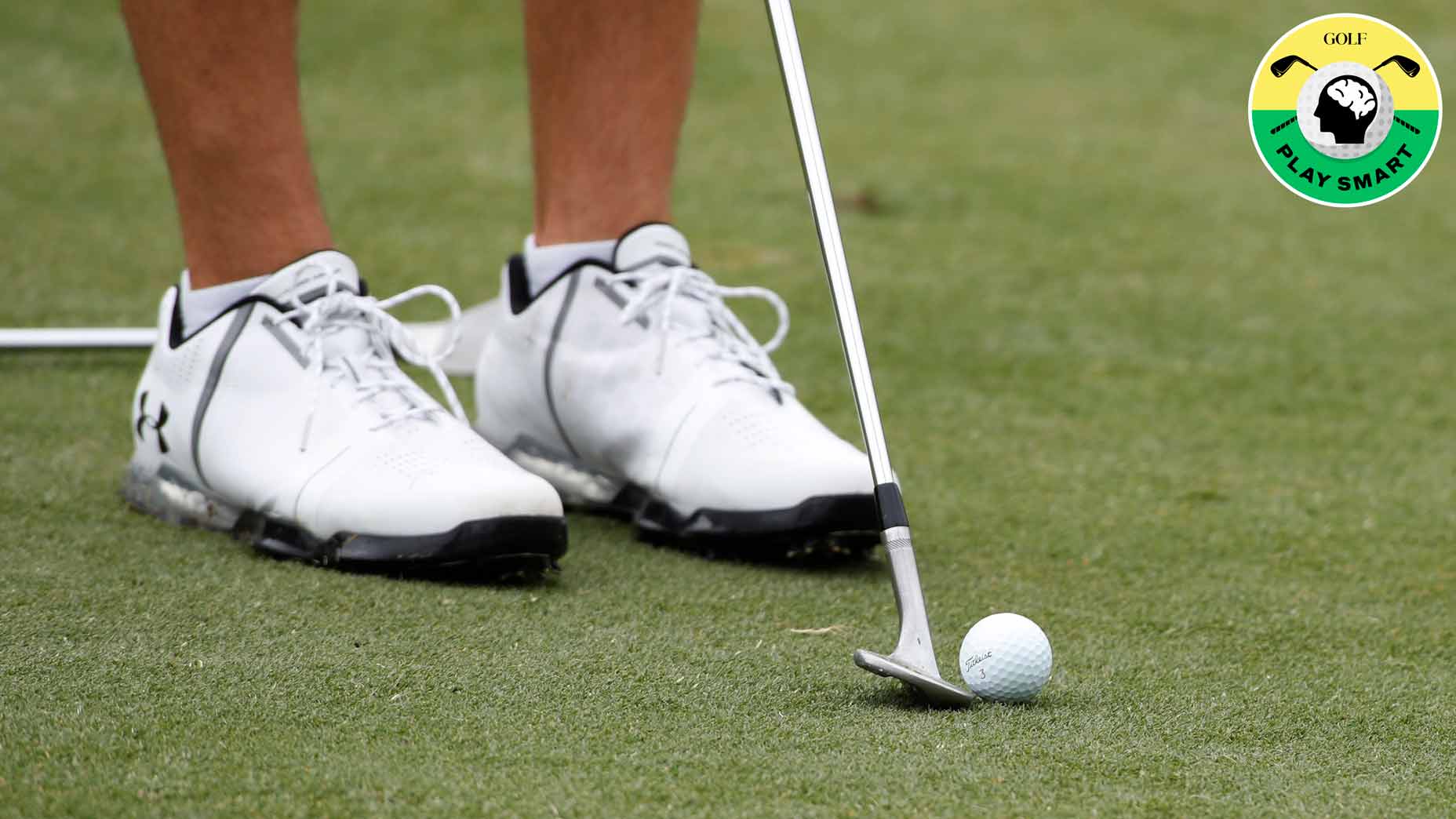Golf Logo
Doing this 1 easy thing ensures you’ll shoot lower scores
SHARE
- Share on Facebook
- Share on Twitter
- Share by Email
InsideGOLF Holiday Bonus
FREE GOLF HAT
Figure out your wedge gapping to bring your handicap down this season.
Getty Images
Welcome to Play Smart, a regular GOLF.com game-improvement column that will help you play smarter, better golf.
When I played golf in high school, I didn’t hit it very far, but inside of 100 yards, I was as good as anyone. Put a wedge in my hands and I could compete. I could get up-and-down in my sleep.
Playing golf now, I still don’t hit it very far. I hit it farther than I did in my teens, but not nearly as far as I’d like. No matter, my ball striking has improved so much that I’m a far better golfer than I was 12 years ago.
The funny thing is, I’ve gotten much worse with my wedges than I was when I was a kid. No longer do I expect to get up-and-down from greenside lies, or anticipate spinning a wedge in close from the fairway. Now those types of results are a pleasant surprise.
Part of this regression with the wedges can be attributed to the simple fact that I don’t get to practice nearly as much as I used to. However, there is another simple reason I’m worse with my wedges, and it’s a mistake I see lots of recreational golfers make. Luckily, the fix is rather simple.
When you step up to a shot with a wedge in your hand, do you know how far the ball is going to fly? Most shots with a wedge are not going to be full swings, so it’s important you figure out how far a partial swing will go. The issue is, most recreational players don’t know these numbers. They know their full-swing yardage, and for anything less, they rely entirely on feel.
Until a few weeks ago, I was guilty of this, too — and it was costing me precious strokes every round. So, I decided to dial in my wedges for the upcoming season.
You can be as detailed as you want when dialing in your wedges — Bryson DeChambeau famously uses a “clock” system — but for me, I went with three different swings with each wedge: full, three-quarters, and half. I went to the simulator and hit 10 balls with each swing, getting an average carry yardage with every swing for each club. My method was far from scientific, but it was a great way to get a nice baseline number for the three swing types with each wedge.
You can see my results below.
| Full swing | 3/4 swing | 1/2 swing | |
| Pitching wedge | 114 yards | 102 yards | 83 yards |
| 49-degree wedge | 101 yards | 86 yards | 71 yards |
| 55-degree wedge | 84 yards | 73 yards | 56 yards |
| 59-degree wedge | 70 yards | 55 yards | 42 yards |
Again, my method was not the most scientific, but it did supply me with a nice baseline yardage for each wedge and swing type. And now when I’m on the course, I have a much better understanding of how far my ball will fly for each shot.
As we head into the new season, I recommend every recreational golfer go through the same testing. It’s an easy way to lower your scores — and it doesn’t even involve changing your swing. What more can you ask for?

Golf.com Editor
Zephyr Melton is an assistant editor for GOLF.com where he spends his days blogging, producing and editing. Prior to joining the team at GOLF, he attended the University of Texas followed by stops with the Texas Golf Association, Team USA, the Green Bay Packers and the PGA Tour. He assists on all things instruction and covers amateur and women’s golf. He can be reached at zephyr_melton@golf.com.